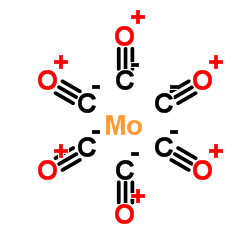Theoretical studies on the Mo-catalyzed asymmetric intramolecular Pauson-Khand-type [2+2+1] cycloadditions of 3-allyloxy-1-propynylphosphonates.
Qingxi Meng, Ming Li
Index: J. Mol. Model. 18(8) , 3489-99, (2012)
Full Text: HTML
Abstract
Density functional theory (DFT) was used to investigate the Mo-catalyzed intramolecular Pauson-Khand reaction of 3-allyloxy-1-propynylphosphonates. All intermediates and transition states were optimized completely at the B3LYP/6-31 G(d,p) level [LANL2DZ(f) for Mo]. In the Mo-catalyzed intramolecular Pauson-Khand reaction, the C–C oxidative cyclization reaction was the chirality-determining step, and the reductive elimination reaction was the rate-determining step. The carbonyl insertion reaction into the Mo–C(sp(3)) bondwas easier than into the Mo–C=C bond. And the dominant product predicted theoretically was of (S)-chirality, which agreed with experimental data. This reaction was solventd ependent, and toluene was the best among the three solvents toluene, CH3CN, and THF.
Related Compounds
| Structure | Name/CAS No. | Molecular Formula | Articles |
|---|---|---|---|
 |
Carbon monooxide-molybdenum (6:1)
CAS:13939-06-5 |
C6MoO6 |
|
Determination of Ni(CO)4, Fe(CO)5, Mo(CO)6, and W(CO)6 in se...
1999-02-01 [J. Environ. Monit. 1(1) , 33-7, (1999)] |
|
In situ generation of carbon monoxide from solid molybdenum ...
2002-01-01 [J. Comb. Chem. 4(2) , 109-11, (2002)] |
|
Microwave-promoted aminocarbonylations of aryl chlorides usi...
2006-01-01 [J. Comb. Chem. 8(1) , 4-6, (2006)] |
|
Aminocarbonylations employing Mo(CO)6 and a bridged two-vial...
2012-12-21 [J. Org. Chem. 77(24) , 11393-8, (2012)] |
|
Enhanced photolysis in aerosols: evidence for important surf...
2006-10-28 [Phys. Chem. Chem. Phys. 8(40) , 4700-10, (2006)] |